SHCC approves setback increases despite vehement opposition from residents
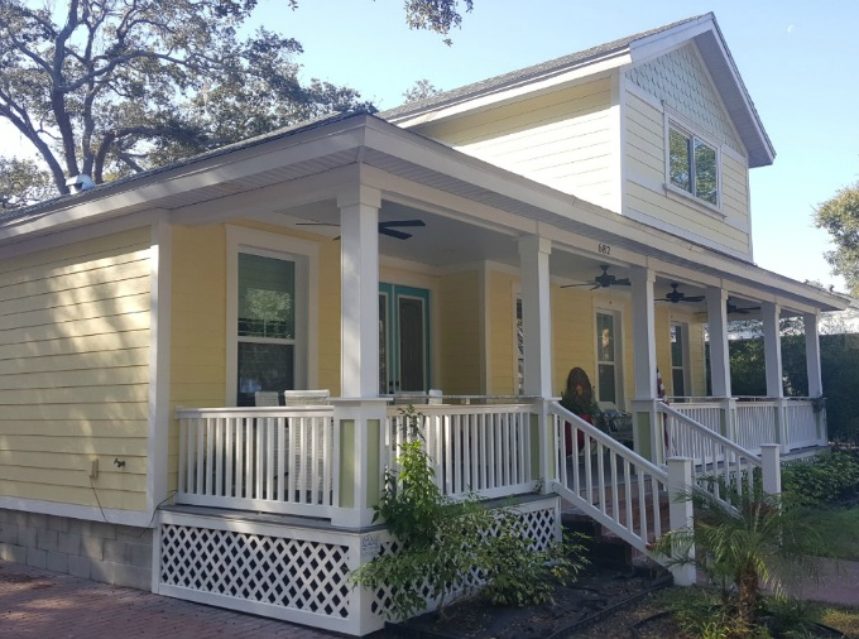

One by one, a dozen Safety Harbor residents stepped up to the podium in the City Commission chambers on Monday night to speak out against a controversial ordinance that would increase the size of the setbacks on certain lots in the city’s R2 residential districts.
But despite the vehement protests of the residents that filled city hall, the commission voted to pass the ordinance, which would also allow for bigger porches as well as backyard garages, on second and final reading by a count of 4-1, with Commissioner Carlos Diaz casting the lone dissenting vote.
The issue, which has been bubbling on the surface of the city for the better part of the past year, has caused a nasty divide in the community that has led to confrontations on social media and in person, with many residents, and one commissioner, wondering why the changes were being suggested in the first place.
“Why are we increasing the setbacks?” Diaz asked when the agenda item came up. “Why?”
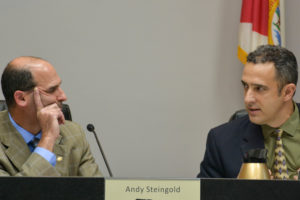
Many of the homes in the downtown corridor that were built 50 years ago or more, were considered to be non-conforming because they were already much closer to the lot lines than the codes that had been created since then, would allow. A ruling in 2013 was made to increase setbacks a few feet in order to bring more of those homes near the downtown corridor into compliance.
Mayor Andy Steingold said the decision was made in part to reverse the ruling from 2013.
“The attempt was to fix the issue with pre-1950 properties,” Steingold replied. “Because people that owned pre-1950 property, there was a lack of compliance because they weren’t 25-feet back, so we enacted legislation here so that people wouldn’t have to get a variance.”
Steingold explained the new ordinance was a compromise between the old standards and the post-2013 versions.
“If we were to go back to prior to this 2013 legislation we enacted…that essentially would be worse for residents than what we’re trying to do,” he said. “We’re trying to address an unintended consequence by adding two feet. The sky is not falling. Two feet is not going to thwart development.”
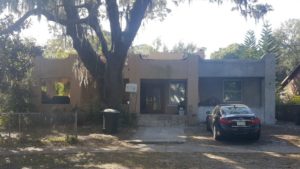
Despite the mayor’s explanation, many of those in attendance weren’t buying it. In part, because the new setbacks not only decrease the utility of property by an additional 2 feet on the sides – increasing from a total of 14 feet to 16 feet – but also another 5 feet in the front yard as well as less flexibility for placement of a room addition in a pre-existing home. Residents expressed that not only will they be losing more of their land to utilize, it will bring more homes in the area back into a non-conforming state, which is the opposite direction most city planners would recommend.
“The big question I have is, who told you that 2013 needed to be remedied?” Vic Curti, co-founder of Smart Growth Safety Harbor, asked.
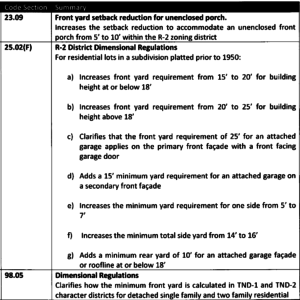
“The voice that we’ve been bringing to you is telling you that we see the changes that happened…going in conjunction with what the experts all through the country that do this for a living,” he added. “They said, you’re on the right track. You’re doing the right thing. So you are listening to a voice that I disagree with, is the voice of the community.”
“We’re talking about changing things to look like a subdivision,” local Realtor Jaycee Jarrell said.
“You’re asking people to give up the right to build a home, and the average home right now is 2,600 square feet, and you’re telling people they can’t build that here,” she added. “We already have a code in place that’s effective, it’s working. Why are we changing something that’s not broken? Why are we putting something new in place?”
The mayor explained that people have been building right up to the property line, which has caused consternation among some residents, to which Jarrell replied, “but if they buy the property, isn’t that their right?”
Possibly, the greatest frustration in the room for these residents, was their lack of clarity in why the Commission wanted to make these R2 zoning changes in the first place.
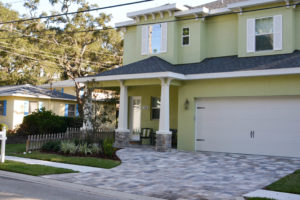
Local resident and Professional Urban Planner of nearly 30 years, Tammy Vrana said “I know that my non-downtown property, my non-TND property which I think the two houses that were being talked about are in the TND district, why is my R2 property, pre-1950 rolled into this set of changes, you’re addressing a totally different area than the Iron Age, the townhouses or the two houses that were indicated, so I’m confused . Why is it that none of these houses are in the R2 district but the current regulations are addressing the problems in those outside districts. It makes no sense.”
Vrana went on to say, “The recitals at the beginning of your ordinance provide no clue as to why we are doing this. Everyone that is regulated by an ordinance – future city staffers, elected officials, residents – should be able to readily understand why the changes were made in that ordinance.”
If the residents frustration from a lack of reasoning on the ordinance was not enough, the the 3 minute time clock that the Commission enacted at the meeting did not help. Historically, the Commission might allow a professional or representative of a larger group, the opportunity to speak longer, but this was not going to be the case this go around, as the residents were swift to be cut off mid thought.
Resident Colin Young said. “Last week was the first I heard of this…and I am appalled that we have an expert willing to donate her time and expertise to explain these issues and a number of people are willing to cede their time to her and we are not willing to let her speak.”
Colin went on to say, “If we continue down this path the downtown is going to be hollowed out, it’s going to be nothing but professional services, lawyers, real estate agents, that sort of thing. So it just seems to me we don’t have a clear idea of why we are proposing these changes or what specific problem we are trying to solve.”
But despite the protests, in the end, four of the five commissioners stuck with their beliefs that increasing the setbacks would be beneficial.

“There’s a lot of people here in opposition. I understand that,” Vice-Mayor Andy Zodrow said. “But I’ve talked to a lot of people and what I’ve consistently kept hearing is people were upset about some of the large homes coming in.”
“People buy a property with an expectation there’s not gonna be a house five feet away from their property lines…and a lot of the people I talked to wanted that separation. This was a compromise.”
Zodrow went on to say that he supports the principals of the smart growth movement, but he doesn’t believe they’re applicable in Safety Harbor.
“I like TND, traditional neighborhood development, I like the idea of having a higher density and then as you go out, you get less and less dense,” he said. “But this area has platted lots, and the platted lots are a certain size today. We, the government, can’t change the platted lots. We’re stuck with how this area was set up, and we have to deal with it today.”

Commissioner Janet Hooper, who like Diaz is a candidate in the upcoming municipal election, reiterated the reason for the changes.
“There were unintended consequences,” Hooper said of the 2013 ruling. “And they could’ve left it the same way and allow homeowners to do variances and go through the administrative process. Instead we chose to make a legislative change.”
“We did a compromise to try and get bigger porches and give a little more space on the side to try and rectify some of what happened.”
The discussion ultimately concluded with the 4-1 vote in favor of passing the ordinance.
After the meeting, Mayor Steingold spoke about the commission’s decision.
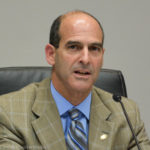
“Essentially, the purpose was to apply a ratio from post-1950 (lots) to pre-1950 size to have some proportion with the placement of homes on lots to allow for appropriate and satisfactory green space between homes,” Steingold told Safety Harbor Connect. “That’s it.”
“There’s got to be some parity,” he continued. “If we did away with what was changed in 2013, the ordinance that created this issue, people would really have something to complain about. But in reality, it’s a small reduction that makes sense.”
Related content:
- SHCC agrees to increase setbacks in downtown district
- Commission scraps controversial setback ordinance
- Residents, officials square off over the future of Safety Harbor
- P&Z to address hot button topics Wednesday





Funny how this is supposed to be a news site, and this story is full of editorial opinion. Your veil is getting thinner and thinner.
Everyone please pay attention to how these people are voting and vote responsibly the next election. We should demand voting records of each one be published. Be careful with the mayor election. They should have to own property in Safety Harbor to be qualified.
Does the Mayor currently own Safety Harbor property? Is absentee ownership enough or is there a full time residency requirement in place? If not should there be?
John,
Mayor Steingold and all commissioners except Janet Hooper who is running for Mayor, are homeowners. Janet Hooper has rented a home since moving to Safety Harbor less than 3 years ago, after signing over her Clearwater residence in lieu of foreclosure to Bank of America. Home ownership should be a requirement for city elected officials.
-The Real Riddler Really-
I love that finally government has taken a stand on these issues. I don’t live in Safety Harbor but right next door in Dunedin. I feel our town is selling out to many people and letting things pass that should not. You will now walk downtown in Dunedin and have a very large three and four story building looming over small quaint shops of one story in our town – how sad to see Dunedin cave in to “big builders”.
Congratulations to Safety Harbor for doing the right thing, just because someone wants something shouldn’t make it a must have.
When you move to Safety Harbor then you can have a voice. We have a lot of friends who live in Dunedin and love it! But you don’t even live there either. So why in the hell are you even commenting? Something tells me you are probably a renter.
The majority hss once again proven that they are against progress of any kind in this city. They have their heads stuck in the sand and are unwilling to budge on anything that will help this city grow, thrive and prosper. Carlos, once again, is the only rational member and is willing to question and oppose the status quo. Lets all come together to make sure Hooper does not become our next Mayor, or the battle for survival in this town will take monumental strength and as much passion as we can muster.
I continue to hold hope in my heart that smart, thoughtful, and KIND people, people willing to leave ego behind and do THE RIGHT THING, will bring much needed change for the betterment of our fair (and I use the term loosely) city.
Carlos has gained a vote form me and Hooper definitely will not get my vote. Be sure to vote on March 14th.
Amen. We need to affect positive change in this quaint burg, and not with attacks, rudeness, and powerplays, but with kindness, mutual respect and a desire to make this a better town for EVERYONE in it, not just the folks who have lived here for forty years.
Agree!
I believe the commission did the right thing. I want open windows when Florida weather permits and I do not want to hear my neighbor snoring. I want to walk on sidewalks without having to go into the roadway because the only place to put the trash can, the yard waste and the recycles is on the sidewalk.
It appears M r. Diaz favors the builders and real estate firms trying to get the most out of a lot for their money without regard to the living consequences.